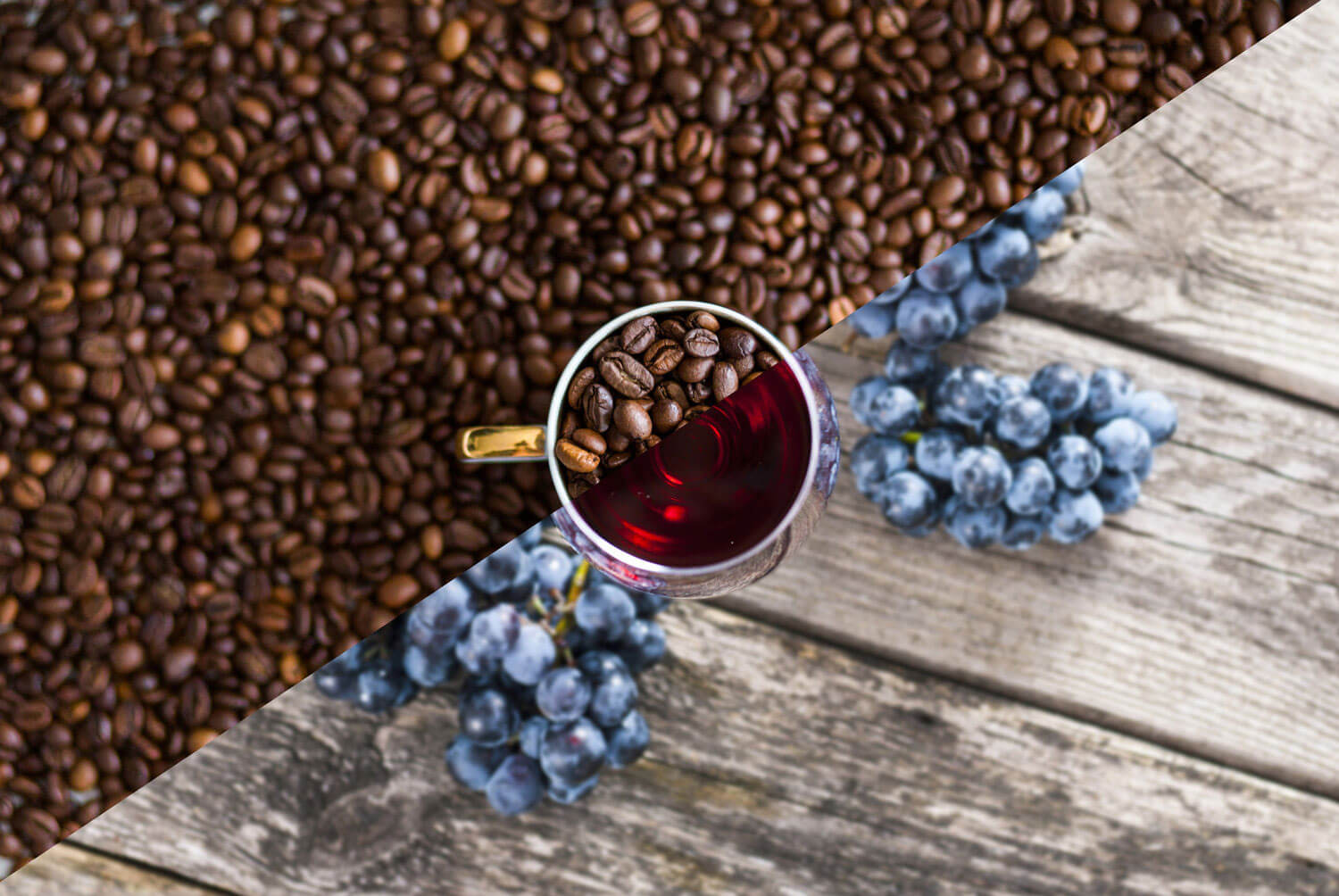Coffee and wine – a tale of two fruits
Since nomadic people planted their first seeds, those who cultivate the land have always searched for new ways to make more of their harvest. Some crops could be transformed in almost magical ways, creating an entirely new culture of cultivation and craft in the process. Coffee is one such crop. It starts life as a cherry growing on a bush, but we consume it after the seeds of this cherry are dried, roasted, ground, and then infused with hot water.
This process is a huge transformation for the coffee cherry, and each step has a cumulative effect on the taste of the coffee you drink. But one of the most fundamental factors to shape the quality and characteristics of a cup of coffee will always be the region where the coffee crop is harvested. For nearly 20 years, I’ve sought out superb single origin coffee for our own blends. I’ve learnt of the many ways that each coffee-growing region differs, and I’ve discovered how individual growers nurture the quality of their own crop. That’s how I have come to see coffee as comparable to wine. Both are transformed from a simple fruit in a production process, yet both retain distinct characteristics from their place of origin.
The “third wave” of coffee continues to evolve, bringing a greater focus on single origin coffees and on light roasts that better showcase their character. Yet coffee has a long way to go before it captures the prices and respect commanded by wine. Perhaps this is because the coffee world still has a great deal to learn from the world of wine in terms of growing, fermenting and processing.
I’ve visited our coffee growers in Colombia, trekking through one the most spectacular coffee-growing regions in the world. I witnessed distinct micro-climates in the same farms, yet rarely got a sense of what the French call Terroir. The Monks of Burgundy, over 600 years ago, first noticed that different areas of land in the same vicinity produced very different wines. Coffee is less particular. The difference in coffee stems from its region of origin. Distinct and complex flavour profiles can be discerned between coffees like an Ethiopian Yirgacheffe and a Kenya AA – or even a Colombian AAA and a Sumatra Single Estate Bean. However, it’s much harder to tell the difference between flavour profiles of different coffees farmed in the same origin.
Whilst we may envy the privilege of the wine world, we will never achieve this until those who cultivate the coffee cherry are treated with the same respect as those who harvest the grape.
If some argue that Burgundy produces the world’s best wines, where will we find the Burgundy of Coffee? Burgundy is a geographic Goldilocks zone for wine production. Despite 78 kilometres of limestone ridge, almost Irish weather and dangerous frost, it manages to produce Chardonnay and Pinot Noir grapes that produce the world’s most expensive wines. How do the same grape varietals in 15 other countries simply make better wine when grown in Burgundy? Simply put, it’s the Terroir. In every bottle of Burgundy wine you experience the region: its limestone, soil, weather, process, cork and the farmer’s toil. It’s a complete and beautiful thing.
The worlds of coffee and wine are easily compared, but the coffee industry have a great deal to learn, especially in how the growers are treated. The wine world has long reached a balance between consumer, retailer and grower. Each is respected, and each contribute to the betterment of all. In contrast, coffee has not yet addressed the gross inequity of the grower. There are very few poor wine growers, but the majority of coffee farmers are trapped in crippling poverty.
The origin of this is simply explained: Coffee growers rarely own or control the production process, while vineyards are a part of an integrated ecosystem of cultivation and fermentation. But there appears to be no path for coffee growers to own the added value of roasting, or benefit from the premium that it adds to their harvest.
As we search for the Burgundy of coffee, we must consider how we can create this path, and repair the gross inequality that underpins the coffee world.



